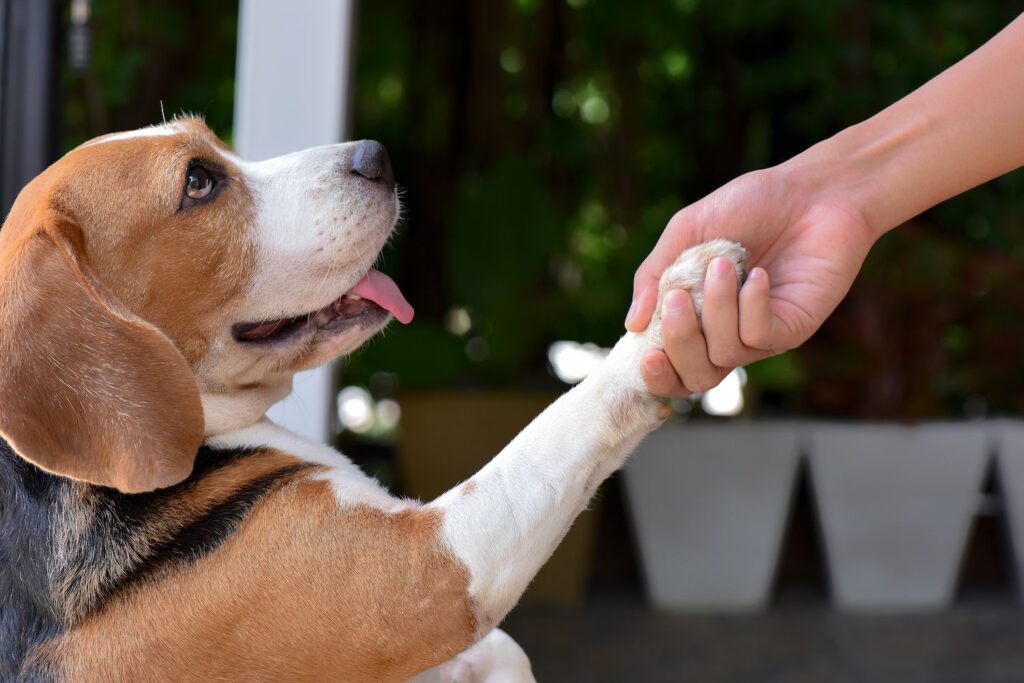Positive reinforcement dog training techniques are widely regarded as one of the most effective and humane methods to teach your dog desirable behaviors. By rewarding good behavior with treats, praise, or toys, you encourage repetition and help improve obedience. This approach builds trust, fosters a positive relationship, and creates a safe learning environment for your dog.
Using positive reinforcement allows dogs to learn that good behavior leads to positive outcomes, enhancing communication and reinforcing strong bonds with their owners. This method not only addresses behavioral issues but also promotes a happy and well-adjusted pet.
Why Positive Reinforcement Training is Important
Positive reinforcement is an effective and humane training method that focuses on rewarding good behavior rather than punishing unwanted actions.
This technique helps create a trusting and loving bond between you and your dog, which leads to better behavior and an overall happier relationship.
Building Trust and Strengthening the Bond with Your Dog
Using positive reinforcement helps to build a deep trust and strong bond with your dog. When they consistently receive rewards for good behavior, they begin to associate you with positive experiences. This reinforces your relationship, fostering a connection based on trust, love, and respect.
Creating a Positive Learning Environment
By using rewards and praise, positive reinforcement creates a supportive and motivating atmosphere where your dog feels encouraged to learn.
This positive learning environment allows your dog to develop new behaviors comfortably, helping to improve obedience while enhancing communication between you and your pet.
Key Positive Reinforcement Techniques to Use
Positive reinforcement dog training techniques are based on rewarding desired behaviors to create positive associations. Here are some methods to effectively train your dog using this approach:
Reward-Based Training
Reward-based training, also known as positive reinforcement, encourages dogs to repeat behaviors by rewarding them with treats, praise, or toys.
This method highlights the dog’s positive actions, creating an association between those actions and the rewards. This encourages repetition and supports effective learning.
Clicker Training
Clicker training is a popular form of positive reinforcement that uses a small device called a clicker to mark the exact moment when your dog performs a desired behavior.
The sound of the clicker helps to communicate with your dog precisely, signaling when they’ve done something right.
When paired with rewards, the clicker allows for clear, immediate feedback that makes training more effective and efficient.
Marker Training
Marker training uses a specific word or sound (like “yes” or “good”) to signal to your dog that they’ve performed the correct behavior.
The key is to provide an immediate reward after marking the behavior. This reinforces the behavior and helps dogs understand exactly what action they are being rewarded for.
How to Apply Positive Reinforcement in Dog Training
Training your dog with positive reinforcement not only enhances behavior but also strengthens your relationship with them. Here’s how to effectively apply positive reinforcement:
Identifying and Using Reward Systems
Every dog is different, and what motivates one dog may not work for another. Understanding your dog’s preferences can help you choose the right rewards. Common rewards include:
| Reward System | Description |
|---|---|
| Treats | Small, tasty treats are a great way to motivate your dog. |
| Praise and Affection | Dogs love attention and affection. Verbal praise or petting can be powerful motivators. |
| Playtime | For some dogs, playing with a favorite toy or engaging in a fun game is the best reward. |
By finding what excites your dog, you can tailor your training to be enjoyable and effective.
Teaching Basic Commands Through Positive Reinforcement
One of the easiest ways to use positive reinforcement is by teaching basic commands like “sit,” “stay,” or “come.” Here’s how to use positive reinforcement for basic command training:
Start in a quiet, distraction-free environment.
Use treats or toys as rewards to motivate your dog.
Give a clear verbal cue (e.g., “sit”) and wait for your dog to follow.
When your dog follows the command, reward them immediately.
Repeat consistently until your dog associates the command with the action.
Keep training sessions short and positive. Consistency and repetition are key to reinforcing new behaviors and building long-term success.
Common Mistakes to Avoid in Positive Reinforcement Training
While positive reinforcement is a great training technique, there are some common mistakes that can hinder your success. Avoid the following pitfalls:
Using Excessive Force or Punishment
While training requires boundaries, using harsh punishment such as yelling, hitting, or shock collars can lead to fear, confusion, and even aggression in your dog. Positive reinforcement focuses on rewarding good behavior, not punishing bad behavior. Instead of punishment, try redirecting your dog’s behavior and rewarding them for positive actions.
Ignoring Timing and Consistency
Effective positive reinforcement relies on timely rewards. If you wait too long to reward your dog, they may not connect the behavior with the reward. Also, consistency is crucial—using different cues or inconsistent rewards can confuse your dog. Ensure that rewards are immediate and consistent to help your dog understand what is expected of them.
The Benefits and Success of Positive Reinforcement Training
Positive reinforcement has numerous long-term benefits that not only lead to better behavior but also foster a happier and healthier dog-owner relationship. Here are some of the key benefits:
Creating a Happy and Well-Behaved Dog
Positive reinforcement creates a positive, enjoyable learning environment, which leads to a happy and well-behaved dog. By rewarding desired behaviors, your dog is motivated to repeat them, improving their obedience and strengthening your bond.
Building a Lifelong Bond
Training through positive reinforcement allows you and your dog to develop a respectful, trusting relationship. The consistent use of rewards and praise helps reinforce the bond between you and your dog, encouraging effective communication and a strong, loving connection.
Reducing Fear and Anxiety
Unlike traditional punishment-based methods, positive reinforcement reduces the risk of fear, anxiety, and aggression in dogs. By focusing on rewarding good behavior, your dog learns in a safe, supportive environment, which leads to a calmer, more confident pet.
Frequently Asked Questions About Positive Reinforcement Dog Training
What Are Positive Reinforcement Methods for Dogs?
Positive reinforcement methods include using treats, praise, and toys to reward good behavior. Techniques like clicker training and operant conditioning also emphasize rewarding desired behaviors.
What Is R+ Dog Training?
R+ dog training is another term for positive reinforcement training, which focuses on rewarding your dog with positive outcomes like treats, praise, or toys to encourage good behavior.
What Are Examples of Positive Punishment in Dog Training?
Positive punishment involves introducing an unpleasant stimulus to discourage unwanted behavior, such as using a firm “no” or a gentle leash tug. However, positive reinforcement should always accompany any form of punishment for best results.
What Are the Four Types of Reinforcement in Dog Training?
The four types of reinforcement are positive reinforcement, negative reinforcement, positive punishment, and negative punishment. Positive reinforcement rewards good behavior, while negative reinforcement removes an unpleasant stimulus. Positive punishment adds an unpleasant consequence, and negative punishment removes a desirable stimulus.
Conclusion
Positive reinforcement is an effective, humane approach to training that focuses on rewarding good behavior, building trust, and enhancing the bond between you and your dog. By using treats, praise, and toys, you can motivate your dog to learn and behave while fostering a positive, enjoyable training experience.
So, embrace positive reinforcement, and watch your dog thrive—creating a happy, well-adjusted, and well-behaved companion for years to come!

